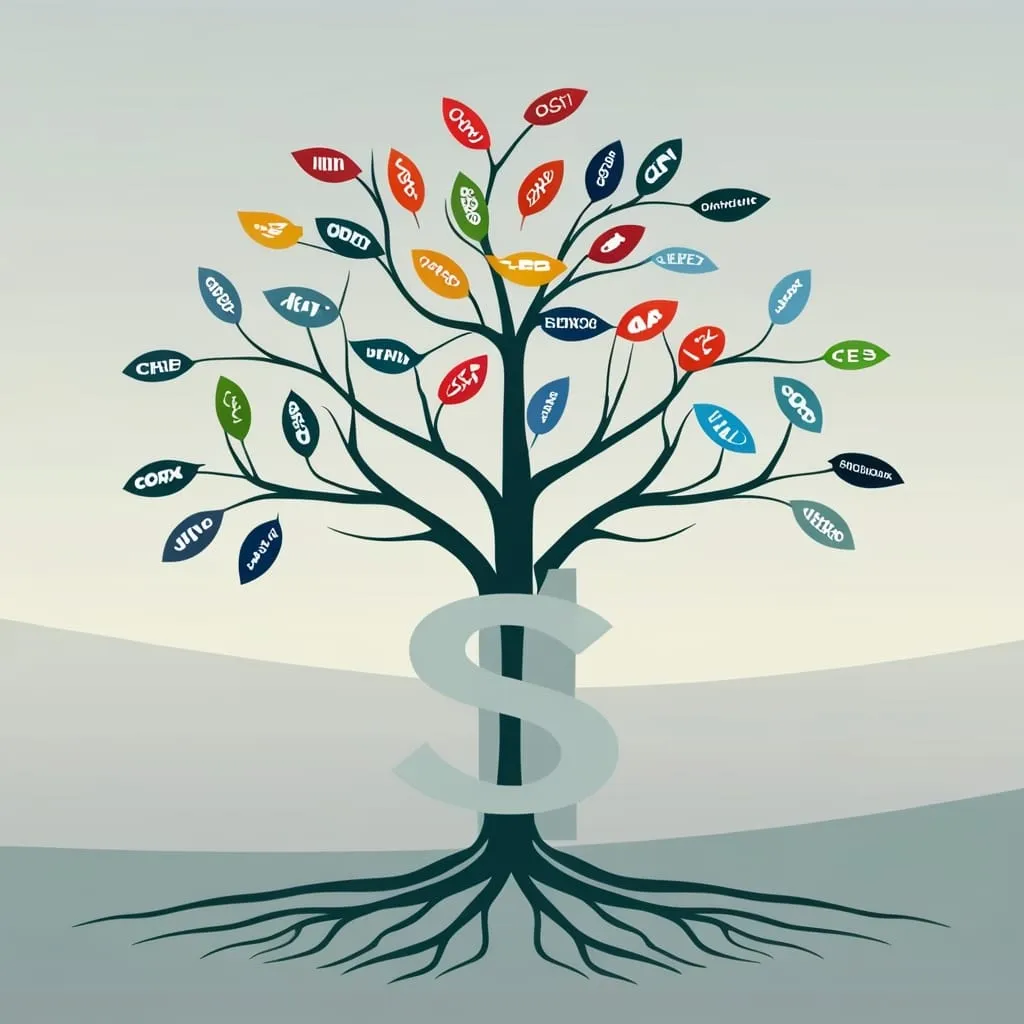Alright, let's dive into the world of value investing and how it can totally transform your portfolio. Buckle up, 'cause we're in for a wild ride!
So, what's the deal with value investing? It's like being a savvy shopper, but instead of scoring deals on shoes or electronics, you're hunting for undervalued stocks. Think of it as finding that hidden gem in a thrift store - it might not look flashy at first, but you know it's worth way more than the price tag says.
The whole idea is to spot companies that are solid as a rock but are trading for less than they're really worth. Maybe the market's having a bad hair day, or investors are too busy chasing the next big thing. Whatever the reason, you swoop in, snag those stocks at a bargain, and then sit back and wait for everyone else to catch on.
Now, you might be thinking, "How the heck do I find these hidden treasures?" Well, my friend, it's all about doing your homework. You're looking for companies that have been around the block a few times, know how to make money consistently, and aren't likely to go belly-up anytime soon. These are the kind of businesses that keep chugging along, rain or shine.
Take Coca-Cola, for example. Everyone and their grandma knows Coke. It's been around forever, makes money hand over fist, and isn't going anywhere anytime soon. If its stock price took a nosedive for some reason, that could be your golden ticket.
But here's the thing - you can't just jump on any old cheap stock. You've gotta look under the hood and kick the tires. There are a few key numbers you should keep an eye on.
First up, there's the price-to-earnings (P/E) ratio. It's like comparing the price of a car to how fast it can go. If a stock's P/E is lower than others in its industry, it might be undervalued. Then there's the price-to-book (P/B) ratio. If it's under 1, that's like finding a dollar bill on the ground - you're getting more value than you're paying for.
And don't forget about dividends! Some companies pay out a chunk of their profits to shareholders. It's like getting a bonus just for owning the stock. If a company's throwing out high dividend yields, that could be a sweet deal for value investors.
Now, here's a pro tip: don't put all your eggs in one basket. Spread your investments around like you're decorating a house. A little bit of tech here, some healthcare there, maybe some consumer goods to tie it all together. This way, if one sector takes a nosedive, your whole portfolio doesn't go down with it.
But watch out for those sneaky value traps! These are stocks that look cheap but are actually more like quicksand - they just keep sinking. Maybe the company's got terrible management, or their whole industry is going the way of the dodo. To avoid these pitfalls, you've gotta dig deep. Read those financial statements like they're the last novel on Earth. Look for red flags hiding in the footnotes.
Here's the kicker though - value investing isn't a get-rich-quick scheme. It's more like planting a tree. You've gotta nurture it, give it time to grow, and resist the urge to dig it up every five minutes to check on the roots. Sometimes, your value stocks might underperform in the short term. But if you've done your homework right, they'll pay off big time in the long run.
Remember what the big man John Maynard Keynes said: "The market can remain irrational longer than you can remain solvent." In other words, even if you're right about a stock being undervalued, it might take a while for everyone else to catch on. You need to be ready to hold onto your investments for years, maybe even decades.
And whatever you do, don't bail on your strategy just because it's not working right away. It's like learning to ride a bike - you might fall a few times, but if you give up, you'll never get to experience the thrill of cruising down that hill with the wind in your hair.
Take the "Dogs of the Dow" strategy, for example. It's all about buying the Dow stocks with the lowest P/E ratios. Some years it might underperform, but stick with it long enough, and history shows it can beat the market.
Of course, you can't just set it and forget it. You've gotta keep an eye on your portfolio, like a gardener tending to their plants. If one of your stocks starts to take off, it might be time to trim a bit and reinvest in something else that's undervalued. And if a stock keeps tanking despite your best analysis, well, sometimes you've gotta know when to cut your losses.
Now, here's where it gets tricky - emotions. Investing isn't just about numbers; it's about keeping your cool when everyone else is losing theirs. Fear and greed can mess with your head faster than a rollercoaster ride. You've gotta stay zen when the market's going crazy.
Think about the 2008 financial crisis. If you'd panicked and sold everything, you would've missed out on the killer recovery that followed. But if you'd held steady and even bought more when prices were low, you'd be sitting pretty now.
Let's look at some real-life examples of value investing in action. Warren Buffett, the godfather of value investing, bought a boatload of Coca-Cola shares back in the late '80s when everyone else was sleeping on it. He held onto those shares like they were his firstborn, and now Coke's one of the most valuable companies out there.
Or take Peter Lynch, the guy who ran Fidelity's Magellan Fund. He had a nose for sniffing out undervalued companies with room to grow. He'd often invest in businesses that were out of favor but had rock-solid financials. His approach led to some seriously impressive returns over time.
So, what's the bottom line? Turning your portfolio around with value investing isn't a sprint; it's a marathon. It's about finding those diamond-in-the-rough companies, diversifying your investments, and having the patience to let your strategy play out.
It's not always easy. There will be times when you'll want to throw in the towel and chase after whatever's hot at the moment. But if you can stick to your guns, do your homework, and keep a level head, value investing can help you build a portfolio that'll weather the storms and come out stronger on the other side.
Remember, Rome wasn't built in a day, and neither is a killer investment portfolio. Take your time, trust the process, and let the magic of value investing work its wonders. Who knows? You might just end up with a portfolio that'll make even Warren Buffett jealous!






